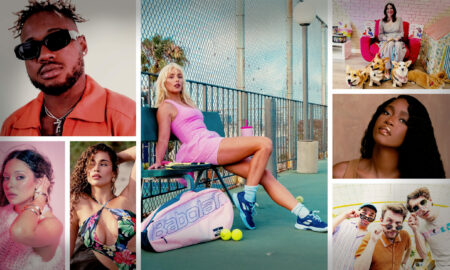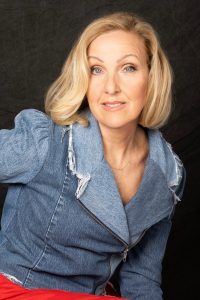
Today we’d like to introduce you to Deborah Lindquist.
Hi Deborah, so excited to have you on the platform. So before we get into questions about your work-life, maybe you can bring our readers up to speed on your story and how you got to where you are today?
I’m an early pioneer of eco fashion and design mainly women’s clothing, accessories, and home decorative accessories. I work with a blend of organic, sustainable and upcycled materials.
I launched my brand in NYC in 1983, starting out as a belt and accessories designer, and then switched to designing clothing when I moved to Los Angeles in 1989.
I have a unique connection to nature, having grown up on a farm in Minnesota. I blend my love for the environment with my love for creating fashion. I’m best known for my work with upcycled materials which include cashmere sweaters, denim, retired military parachutes and other artistic and beautiful vintage materials. But I also love sustainable fabrics like hemp and modal and organics like organic cotton and organic linen.
At the end of last year, I launched my first course in a series of eco-fashion design courses. My courses are offered online and in-person workshops.
Alright, so let’s dig a little deeper into the story – has it been an easy path overall and if not, what were the challenges you’ve had to overcome?
It’s been 40 years since I launched my brand so there has been a lot of everything.
At times it has been smooth, harmonious and exciting.
The beginning was somewhat magical. I literally launched my belt line with a sample of one belt. It was made of Milanese mesh embellished with vintage leather, studs and eyelets. This design could work for both men and women and had an edgy high-end punkish vibe that was perfect for the ’80s “more is more” way of dressing. Milanese mesh is a very unique material and my belt design was a new idea in the market.
I first showed it to a very cool store owner in Manhattan who happened to have three stores. He ordered belts for all three stores and continued to be one of my best customers. Within the first month, I was featured in Women’s Wear Daily along with some very well-known accessory designers as an important designer to watch. I got more press, expanded the line to include jewelry and sold to the best stores in the USA and internationally until I moved to Los Angeles in 1989, where my line got badly knocked off by a well-known belt company. I could see immediately that their belts would fall apart. Mine didn’t because I developed them properly but this knockoff collection was a huge mistake and I knew it would diminish the quality of the category I had created over the last six years. I had basically just arrived in LA and was not happy about this.
I made a huge pivot and started designing clothing. I literally took out my sewing machine, found fabric and started sewing. I’m a classically trained fashion designer, having studied at Parsons School of Design before designing for brands in NYC and launching my belt line. So I knew what to do, I just had to figure it out fast.
I started by designing and producing one-of-a-kind jackets and bustiers using vintage curtain fabric. I started out with a couple of indie boutique owners near where I lived in Venice, working closely with them in order to figure out the LA vibe which is much different than the way people dress in New York City. The jackets were a big hit, and I sold them to many high-end boutiques and incredible people. I found a wonderful and consistent supply of vintage curtains near my home which was an absolute dream come true. At first, I signed my name and date inside the lining of the jacket because I didn’t have garment labels yet. But then I kept it that way because store owners and customers liked it. Sometimes you’ll find my jackets from the early ’90s in vintage stores today with my signature and date inside.
The jackets had a great run but went out of favor after a while. Searching for some new ideas one weekend around 2004, I found a pile of cashmere sweaters at a swapmeet. Some were in good condition; some had some stains and moth holes. I love luxurious cashmere sweaters, so bought a few, covered the holes with appliques, and designed a small collection of appliqué cashmere sweaters. I used my kick press from my days as a belt designer to embellish them a bit with rhinestones and sometimes studs.
It’s interesting when showing buyers a new idea. Some were afraid. “How can you be afraid of a sweater?” I thought. That’s just silly. But it didn’t take long for my sweaters to find their right homes. I sold them to the best boutiques and individuals in the USA and abroad. They were worn by celebrities, featured in the press, in fashion shows, and became what I am known best for to this day. During this time, journalists began writing about my work as well as other designers working in the categories they termed eco, eco-conscious, environmentally conscious, green, and sustainable. This eco terminology was new in the press and included vintage/upcycled, sustainable materials such as hemp, organics such as cotton, and many experimental fabrics. It was a very exciting time. I showed my line at trade shows in major US cities and in Paris and London.
The challenges are real in launching a business and making it successful. I was only 25 when I started my brand and didn’t know everything there is to know about business. I had to learn to navigate the highs and lows and at the same time, stay focused and create beautiful things, produce them, ship them on time, and get paid.
Here are a few challenges, some of which affected many: The introduction of Nafta, having my line knocked off badly, having my line stolen by untrustworthy reps (this happened more than once), stores not paying on time, bouncing checks or not paying at all, wars, economic collapse, stores closing, employee drama, stores bouncing orders after the economic collapse, the C pandemic, being labeled a nonessential business along with the entire garment center in LA during the big C, stores giving up during the pandemic and finally closing, the introduction and popularity of mass-produced, poorly made trendy fast fashion produced in 3rd world countries.
Alright, so let’s switch gears a bit and talk business. What should we know about your work?
I specialize in handmade, eco-conscious, high-end fashion for women and am well known for a few categories of my work which involve specific fabrics. My reincarnated/upcycled appliqué cashmere sweaters and accessories are what I’m best known for and garnered the most press. I launched the cashmere line in 2004.
I started designing bustiers around 1990 when I was making vintage curtain fabric jackets. I still design bustiers in various fabrics today, and they are the basis for much of my special occasion and wedding collection. Many variations of bustiers have been shown in my fashion shows, in the press and have been worn by celebrities including Rihanna, Gwen Stefani, Sharon Stone, Christina Aguilera, Pink, and many others. I also designed bustiers and costumes for the Pussycat Dolls when they were a burlesque troupe. The bustier category is likely why journalists started calling me the “sexy eco designer”!
I also work with retired military parachutes to create dramatic skirts and jackets. I love these strong but light-as-air fabrics which allow a human to jump out of a plane and land safely on the ground.
During the covid lockdown, I was considered non-essential and the entire garment center was closed for about three months. The non-essential label didn’t stick for me, I decided to pivot and make masks out of my stash of fabric scraps since in LA, they were mandated but in short supply. I sold them both on my website and to stores. One of my stores wanted about 100 upcycled denim masks with appliques. The downtown jobbers were closed, even Goodwill was closed. My only option was to go to my rag house supplier and buy a 1000 lb bale of assorted denim. So I made the masks and also started a denim line of jeans, jackets, dresses, and totes. Denim is very much on trend at this moment and the collection is doing very well. Working with upcycled denim is also the subject of my next online course.
I think what sets me apart from others is my unique connection to nature and my ability to work eco-consciously to create high-end fashion. I have always been committed to producing my work in the USA with skilled labor and have always used handcraft techniques which I see is now a developing trend!
I worked with student interns from many countries who came to study with me over the course of about a decade. During this time, I developed some workshops to introduce them to my appliqué and embellishment techniques as well as sewing, design, and construction. I designed the workshops to accommodate levels of expertise from beginner to advanced.
During these years of lockdowns and business closings, I began offering these same workshops and variations of them on Zoom classes, in-person, and expanded them into my first in a series of online courses called “Creating Eco Conscious Fashion: Introduction to Eco Design and Fabric Embellishment”.
I feel that today more than ever it is important to learn useful skills and how to take our creative ideas and turn them into something physical.
My skillsets are what have helped me overcome obstacles, pivot into new directions, and stay in business. I’m a classically trained fashion designer of course, but over time have developed my own “ninja” way of working with vintage materials and various experimental eco fabrics that have come my way. I have a unique skill set and as a teacher, it is rewarding for me to share it with others and educate, inspire, and support my students.
My courses can be found on my course website: https://creatingecoconsciousfashion.com
I’m proud of my work and grateful that I have consistently been able to design my way through crazy times filled with obstacles. I’m happy for the successes as well as what came out of the challenges. And I’m looking forward to supporting people in their journey of creativity.
Do you have any advice for those just starting out?
I think it’s important to know that all thought is creative. Good or bad…
Thoughts become things. We all turn our thoughts and ideas into physical things by nourishing these ideas and putting them into a framework of practice.
Learn how to take the creative ideas you see floating around in your imagination/head, pull them into your heart where you can give them attention and love, and practice and perfect the skillsets necessary to create your idea physically using your hands. I call it my “head, heart, hand” way of working.
I believe this is the healthiest way of creating. I’m not against computers or technology but what this method teaches you is to consistently work through your ideas, work through any trauma, subconscious or otherwise, and raise your vibration.
Pricing:
- My online design course is $147
Contact Info:
- Website: https://deborahlindquist.com
- Instagram: https://www.instagram.com/deborahlindquist/
- Facebook: https://www.facebook.com/DeborahLindquistEcoLifestyle/
- Linkedin: https://www.linkedin.com/in/deborah-lindquist-47423b27/
- Twitter: https://twitter.com/deblindquist
- Youtube: https://www.youtube.com/user/EcoDeborah/videos
- Other: https://creatingecoconsciousfashion.com

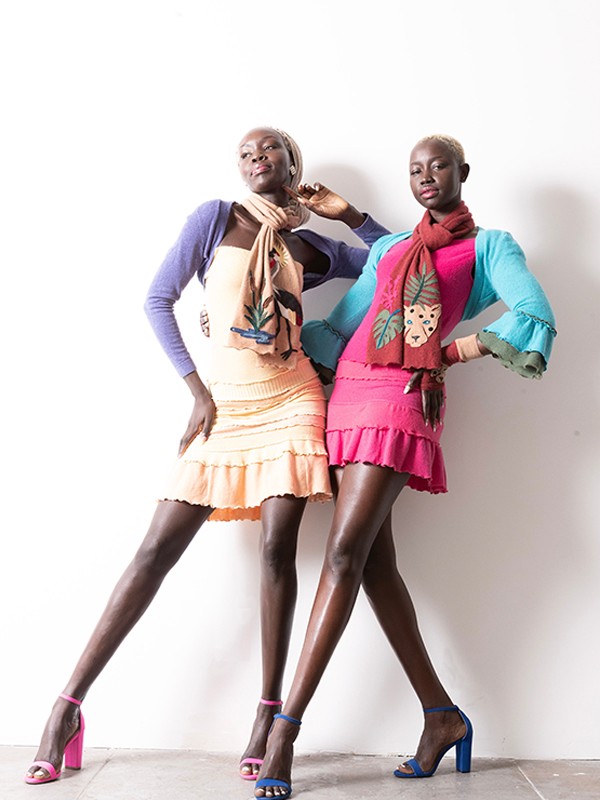
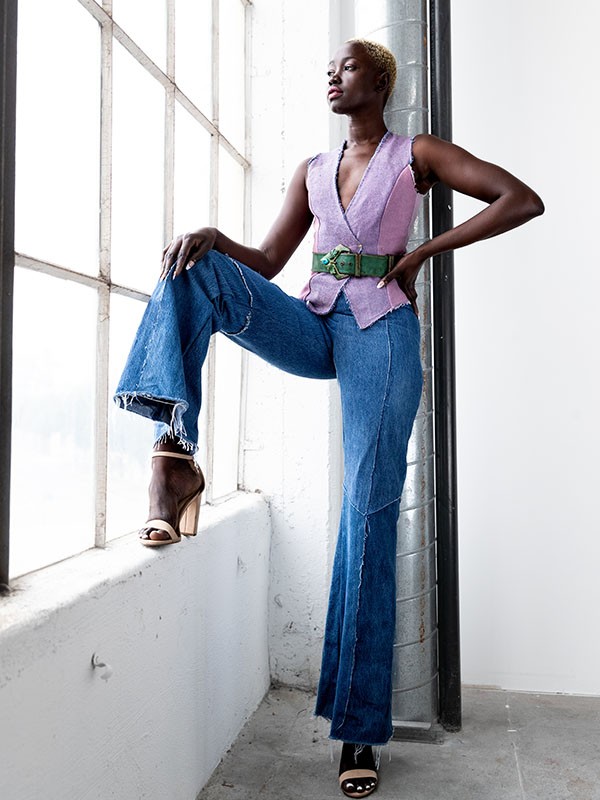




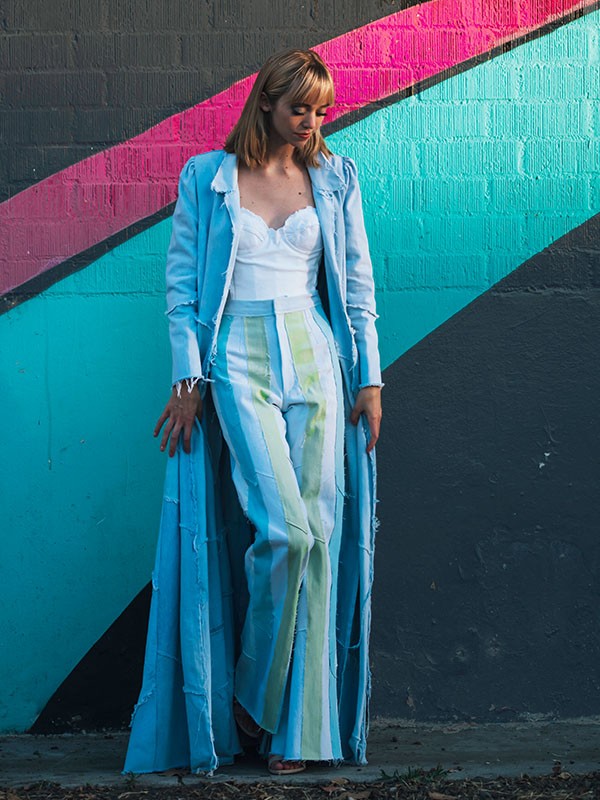
Image Credits
Jennifer Cawley Jenn Spain Ruben Domingo Chris Scott Glenn Campbell

